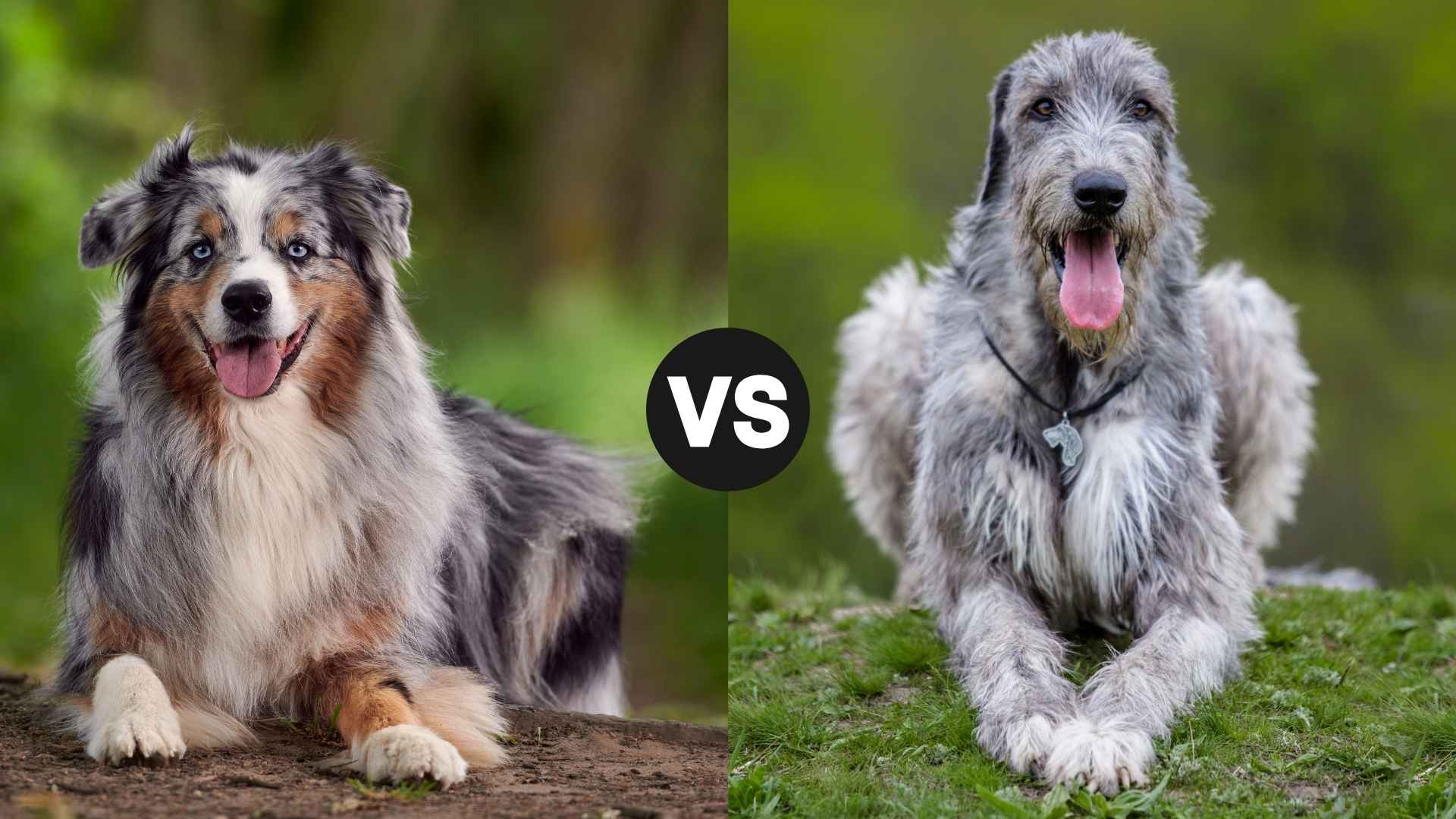Ever wondered what happens when you compare the world’s tallest dog with one of the most intelligent and energetic breeds alive?
The Australian Shepherd, especially those from working lines, thrives on constant activity and mental stimulation. This is a dog that needs a job to feel fulfilled.
According to Hill’s Pet Nutrition, these active dogs aren’t just playful—they’re driven. Without daily challenges or structured tasks, Aussies may grow restless or channel their energy in undesirable ways. Their vitality isn’t optional; it’s essential.
Meanwhile, the Irish Wolfhound is a different story entirely. Towering in stature yet gentle in spirit, this breed is more about quiet companionship than busybody routines.
In the sections ahead, we’ll break down how these two breeds differ in size, temperament, health, grooming, and more, so you can decide which dog fits your world best.
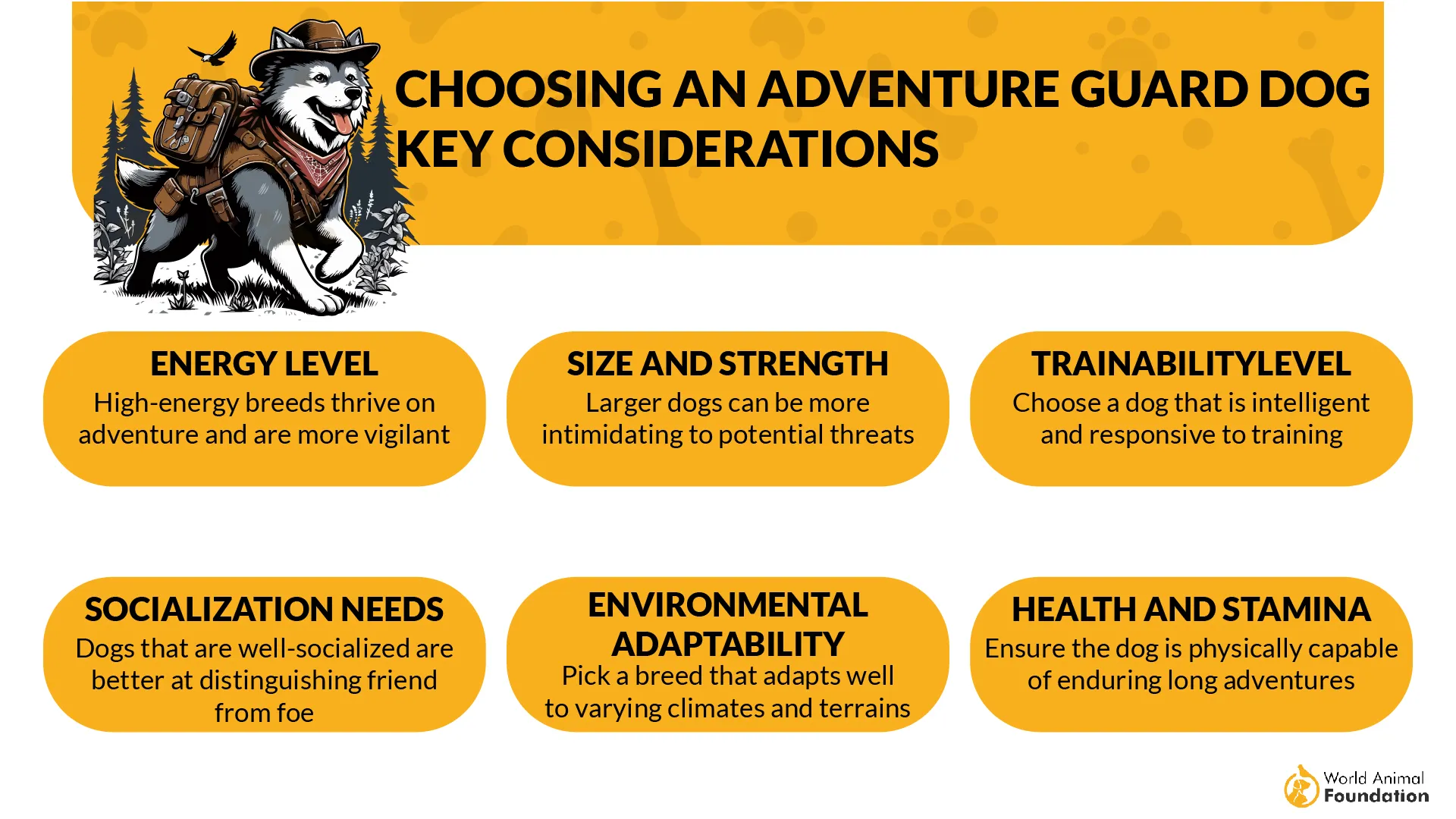
Australian Shepherd vs. Irish Wolfhound
While both breeds are beloved for their unique traits, their differences are striking. Let’s break down how these two dogs compare across key categories to guide your decision.
Size and Weight Difference
Australian Shepherds are medium-sized working dogs known for their agility and balance. Males typically weigh between 50–65 pounds and stand about 20–23 inches tall. Despite their smaller size compared to the Irish Wolfhound, Aussies are muscular and built for speed and endurance.
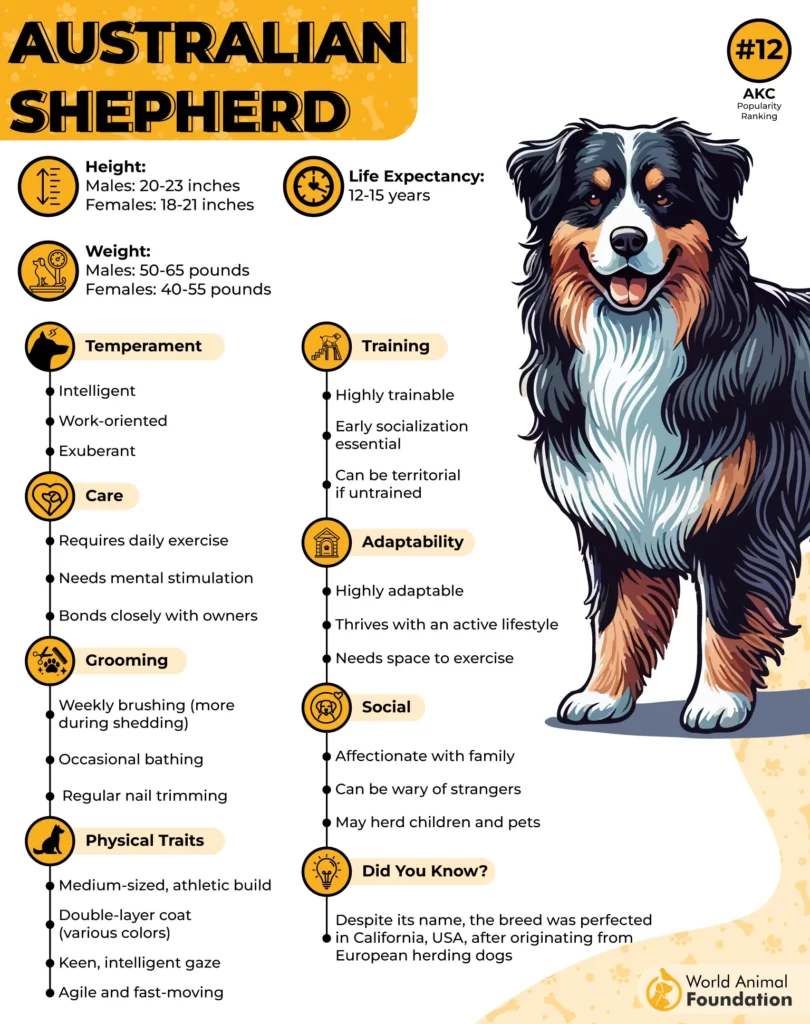
Their compact size makes them easier to travel with, whether by car or boat, especially for people with active lifestyles or limited space at home.
The Irish Wolfhound holds the title of the tallest dog breed in the world. According to the American Kennel Club (AKC), males stand at least 32 inches at the shoulder and can reach up to 7 feet tall when on their hind legs. These gentle giants typically weigh between 140 and 180 pounds.
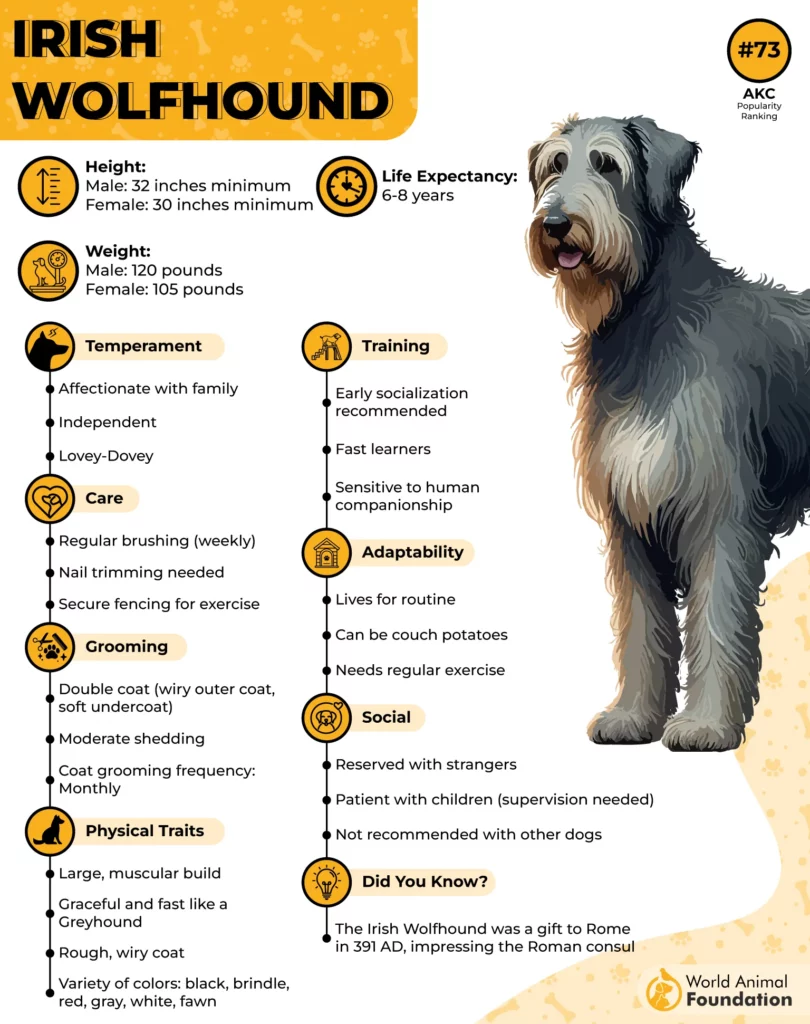
Their stature is awe-inspiring but comes with logistical needs, bigger beds, sturdier leashes, and longer, more open walks.
Comparing Trainability and Intelligence
Australian Shepherds are widely regarded as one of the smartest dog breeds. These dogs tend to learn quickly, often mastering complex tasks with ease. They love having a job to do, whether it’s herding other pets, agility courses, or advanced obedience.
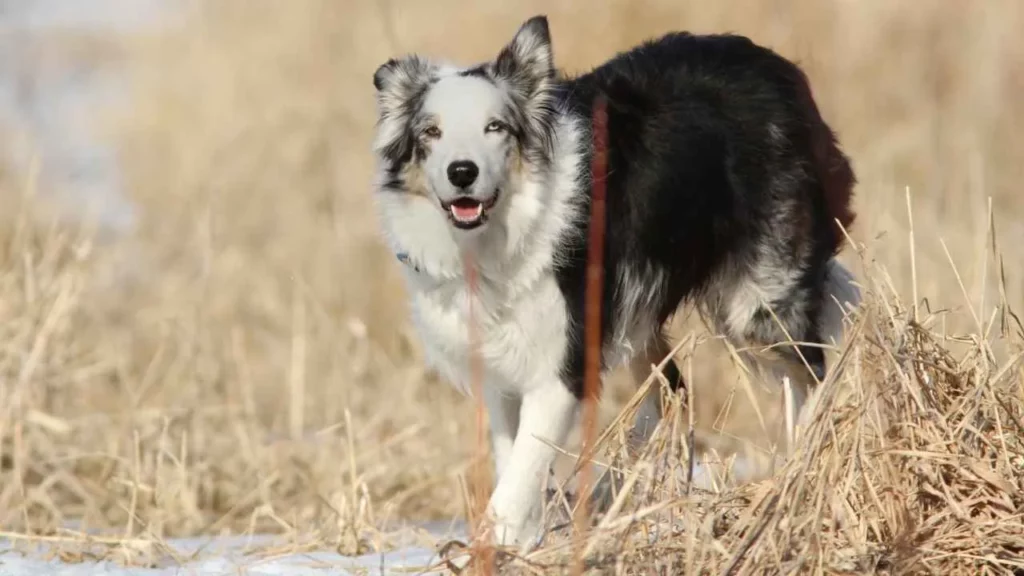
Their intelligence can be a double-edged sword, though; they need regular mental stimulation. Without a task or training, they might invent their own, like chasing cars or mischief indoors.
Irish Wolfhounds are intelligent, but they don’t learn in the same quick, eager-to-please way as Aussies. These dogs tend to be independent thinkers and respond best to gentle, consistent training methods.
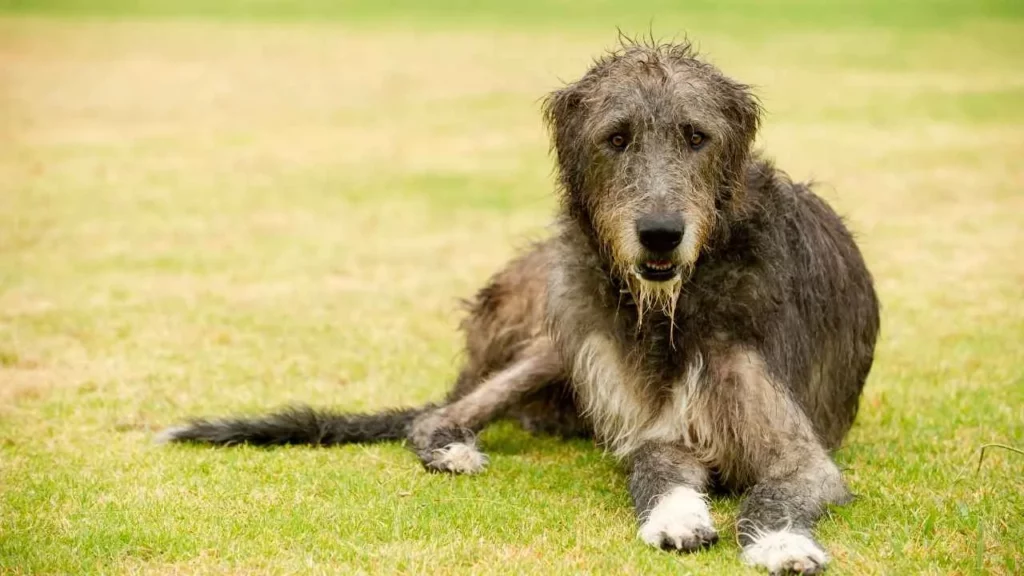
They’re not suited for high-pressure obedience tasks or competitive agility courses. Still, they’re capable of learning essential commands for home safety and public walks.
Personality Traits and Temperament
Australian Shepherds are known for their lively spirit and deeply loyal nature. According to PetMD, they retain high energy levels well into adulthood and sometimes even into their senior years, making consistent exercise and mental stimulation absolutely essential.

Without an outlet, their energy can lead to destructive behaviors like chewing or digging. Their warm personality shines through with family, though they may be cautious around strangers.
Irish Wolfhounds are gentle, dignified, and surprisingly reserved given their massive size. Known for their calm temperament, they’re great with kids and often coexist peacefully with other pets.
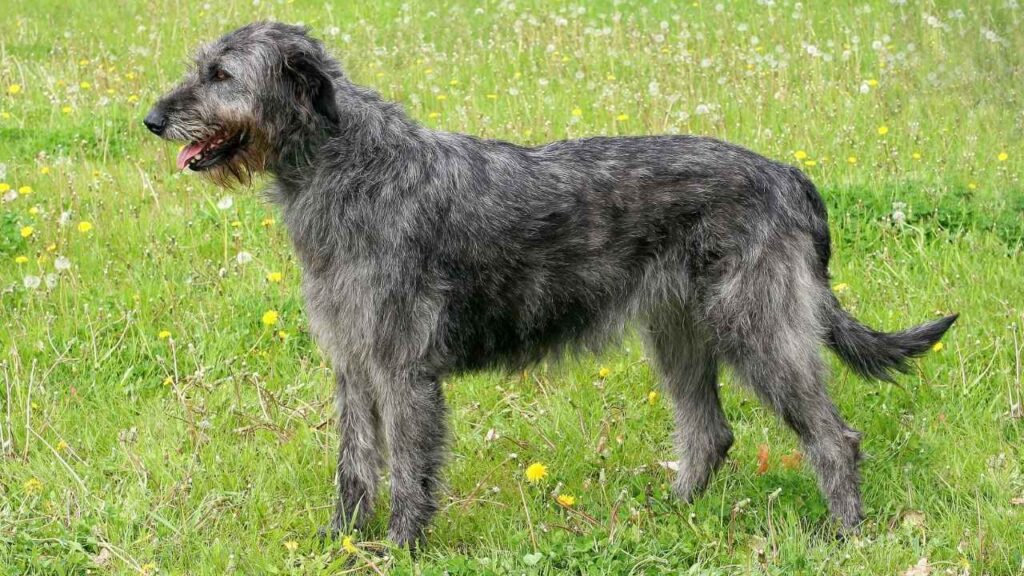
Wolfhounds rarely show aggression and usually don’t bark much, which makes them seem aloof but kind. While they’re affectionate, they’re not overly clingy. They prefer quiet companionship over constant attention, making them ideal for peaceful households and people who value calm dogs.
Adaptability and Independence Assessment
Australian Shepherds need both physical and mental exercise, making them less suited for sedentary households. They adapt well to active homes, especially those with outdoor access.
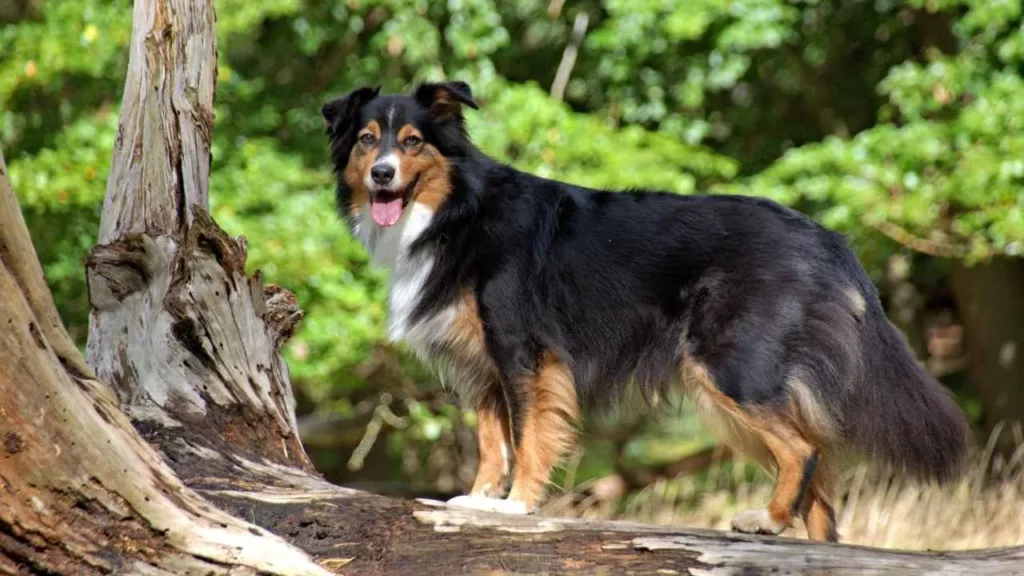
They may develop behavioral issues if left alone for too long, as they crave attention and stimulation. Aussies thrive best with owners who spend a lot of time walking, playing, and working with them.
Irish Wolfhounds tend to be more independent and surprisingly adaptable. Despite their size, they’re generally easygoing and content with moderate walks and cozy rest.
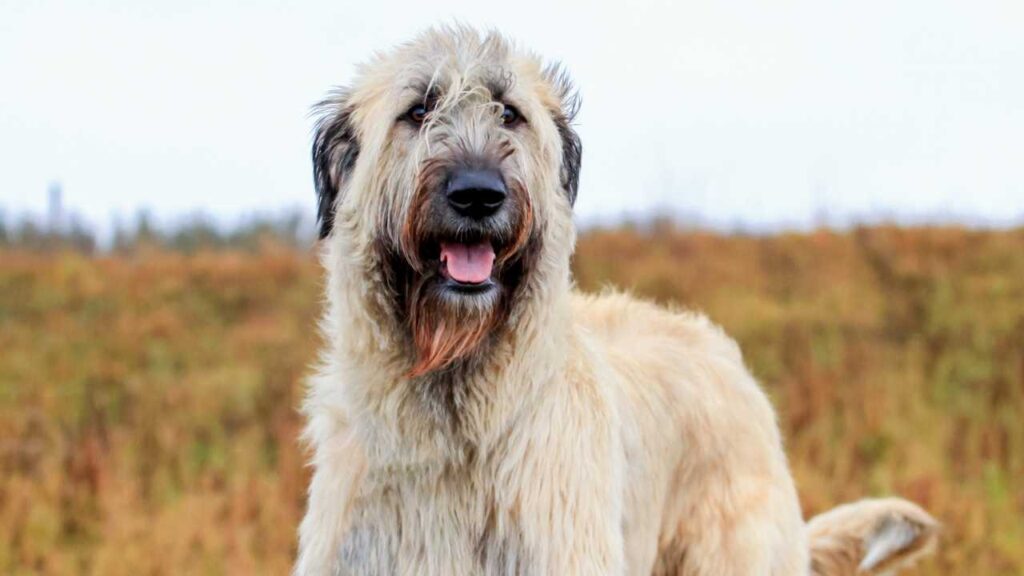
They don’t demand constant activity and rarely become destructive when left alone for reasonable periods. However, due to their size, they may not fit well in apartments or homes without stairs.
Bite Force and Characteristics
Australian Shepherds aren’t known for powerful bite force, but they do have strong jaws relative to their size, which is helpful when catching livestock or playing fetch. Their natural herding instincts may lead them to nip at heels, particularly when excited or chasing. This is not aggression but instinctual behavior that training can redirect. Their alertness and speed make them good watchdogs.
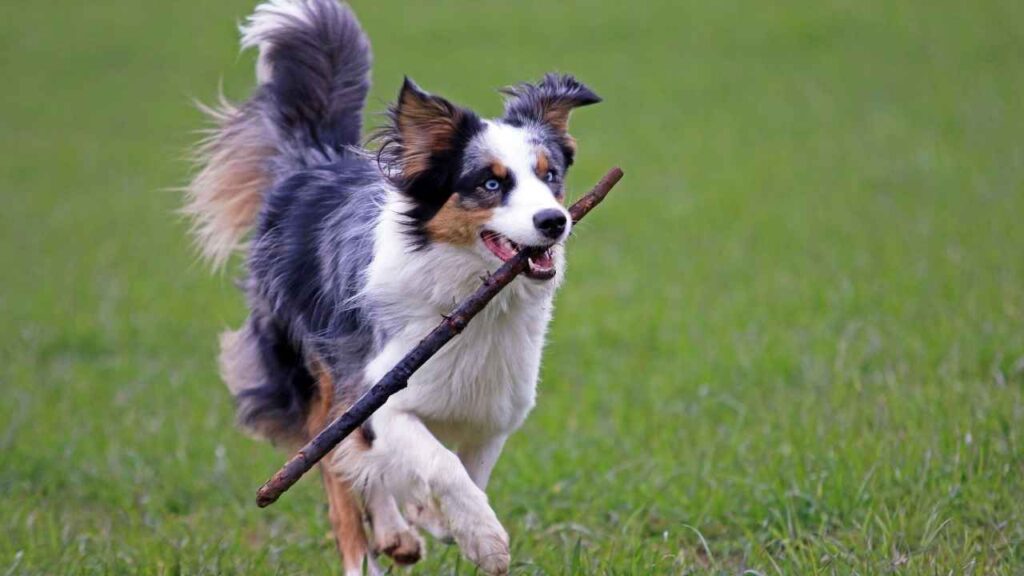
Despite their intimidating size, Irish Wolfhounds are not aggressive biters. They possess the physical power to take down large animals, historically even wolves, but their temperament is too gentle to exhibit this behavior without provocation. Their bite force is significant due to jaw size, but it’s rarely seen in action. These dogs are typically calm, slow to anger, and not territorial.
Health Issues and Expected Lifespan Comparison
Australian Shepherds are generally a healthy breed, especially when provided with a balanced lifestyle and routine veterinary care. According to WebMD, well-cared-for Aussies can live between 12 to 15 years with a proper diet and regular exercise.
Still, like many purebred dogs, they’re prone to some inherited conditions, most notably progressive retinal atrophy (PRA), epilepsy, and hip dysplasia. Regular vet checkups and attention to early warning signs can help extend their healthy years.
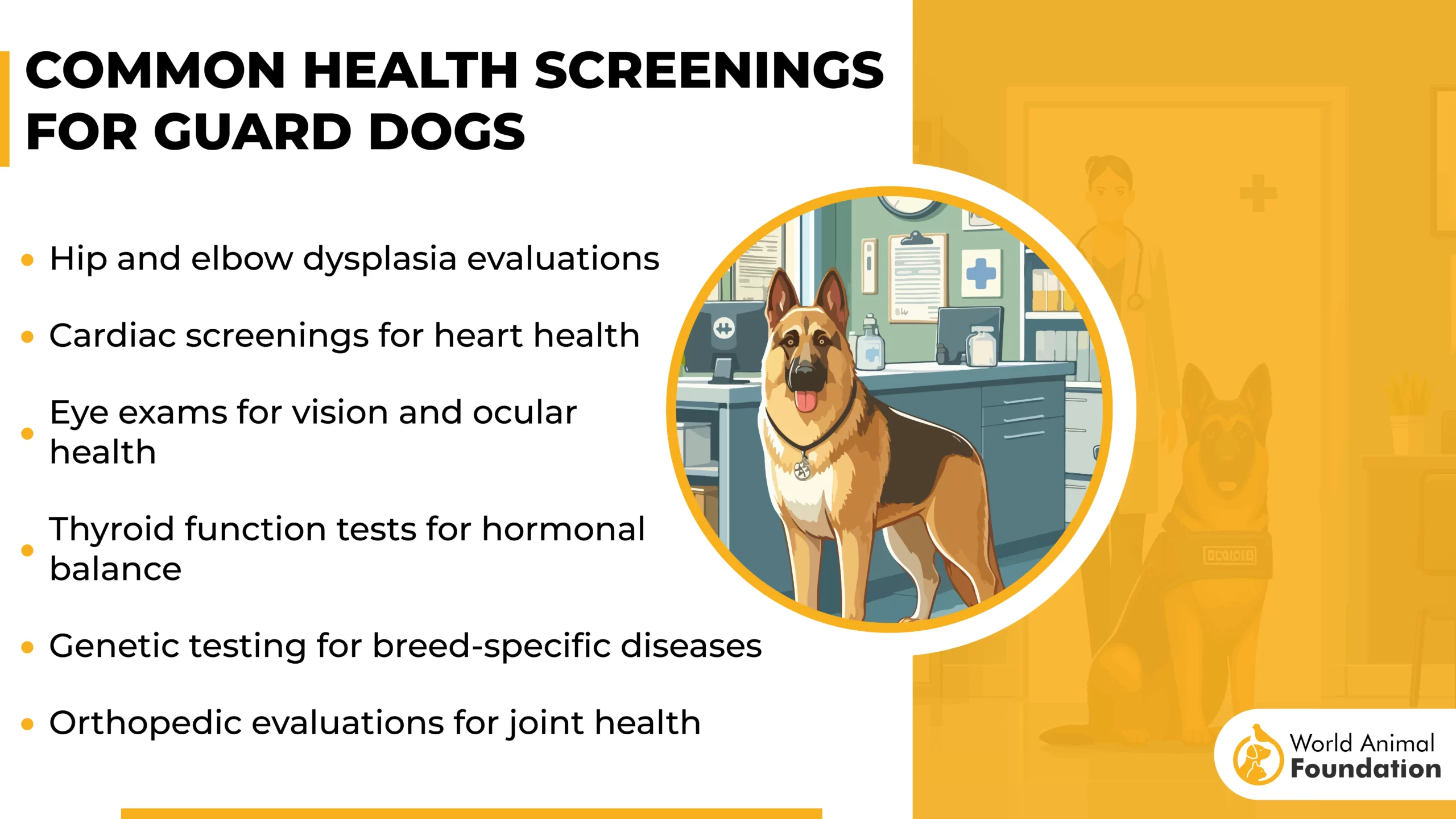
Irish Wolfhounds are prone to several serious health issues, including bone cancer, heart disease, and bloat. Unfortunately, their large size contributes to a shorter average lifespan, typically only 6 to 8 years.
Owners often say Wolfhounds “pass too soon,” which is one of the major downsides of owning the breed. Despite their calm demeanor and low-maintenance nature, their health vulnerabilities mean potential owners must be emotionally and financially prepared for vet costs and early goodbyes.
Nutritional Needs and Weight Management for Australian Shepherd vs Irish Wolfhound
Australian Shepherds need a protein-rich diet that fuels their active lifestyle. These dogs burn a lot of calories daily and require carefully portioned meals to avoid overfeeding. Owners should balance kibble with supplements like omega-3s for joint and coat health. Their weight should be checked regularly since they tend to gain weight if exercise drops.
Irish Wolfhounds require a specialized large-breed diet that promotes bone and heart health while avoiding rapid growth in puppies. These dogs benefit from several small meals a day to reduce the risk of bloat. Weight management is essential, especially after age 5.
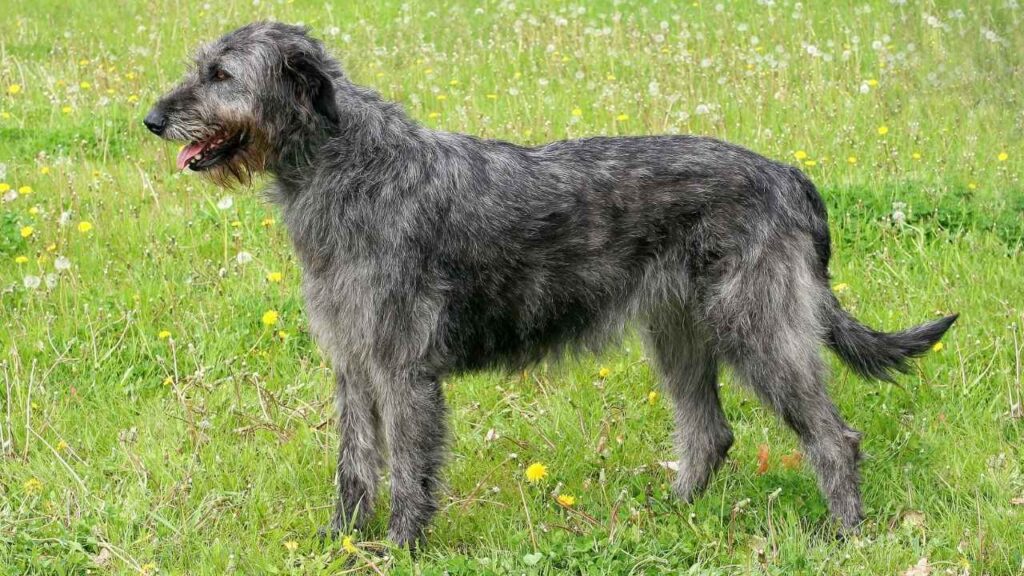
Overweight Wolfhounds tend to develop joint and cardiac issues more quickly. Always consult a vet to adjust portion sizes as the dog ages and becomes less active.
Grooming Requirements and Allergy Considerations
Australian Shepherds have a thick double coat that sheds moderately year-round and heavily during seasonal changes. Weekly brushing is essential to reduce matting and manage allergens. While not hypoallergenic, proper grooming helps minimize dander.
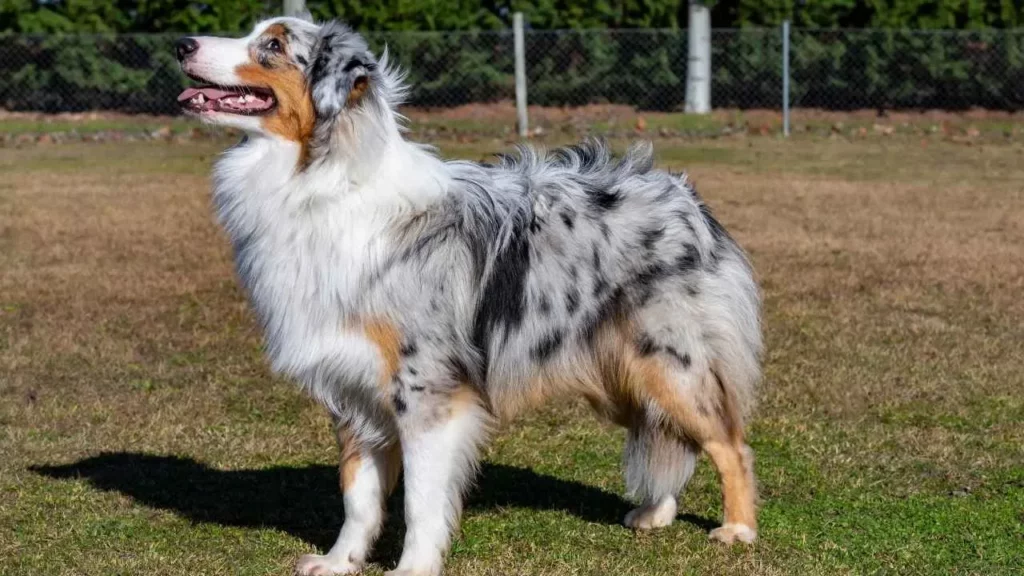
Bathing should be occasional unless the dog plays outdoors often. Ear cleaning is also important due to their floppy ears, which can trap moisture and lead to infection.
Irish Wolfhounds have a rough, wiry coat that’s relatively easy to maintain. They shed less than many other breeds, which may benefit allergy-sensitive households. Weekly brushing keeps their coat tidy, and occasional hand-stripping helps remove dead hairs.
Despite their size, they’re fairly low-maintenance when it comes to grooming. Their coats don’t typically carry as much dander, making them gentler on people with mild allergies.
Conclusion
When comparing the Australian Shepherd vs Irish Wolfhound, it’s clear these two dog breeds were built for very different roles, one for sharp-minded herding, the other for quiet, powerful companionship. The Aussie is energetic, intelligent, and thrives on engagement, making it ideal for people who love to stay active and want a dog that learns fast and plays even faster. On the other hand, the Irish Wolfhound offers a more relaxed, gentle presence, perfect for families who prefer calm days and large-hearted affection.
Choosing between these two breeds depends on your lifestyle, living space, and expectations. Aussies need tasks and attention. Wolfhounds need space and understanding. Both are wonderful dogs in the right hands, and with the right care, each can become a cherished member of your family. Whether you’re drawn to brains or brawn, boundless energy or peaceful strength, there’s something great to love in both.


